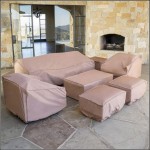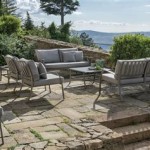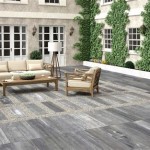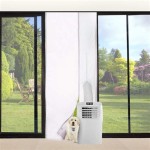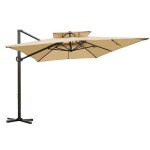Keeping Patio Furniture Secure in Windy Conditions
Patio furniture enhances outdoor living spaces, providing comfort and functionality for relaxation, dining, and socializing. However, exposure to wind can turn these assets into liabilities. Unsecured patio furniture poses a significant risk, capable of causing damage to property and potentially leading to injuries. Therefore, implementing effective strategies to prevent patio furniture from blowing away is crucial for ensuring safety and preserving the integrity of outdoor furnishings.
Understanding the dynamics of wind and its interaction with objects is fundamental to developing effective preventative measures. Wind force increases exponentially with speed, meaning that even a seemingly moderate breeze can exert significant pressure on exposed surfaces. Lightweight furniture, particularly items with large surface areas like umbrellas and tables, are especially vulnerable. The shape and orientation of the furniture also play a role, as streamlined designs offer less resistance compared to bulky or angular pieces.
The material composition of patio furniture significantly impacts its susceptibility to wind. Lightweight materials such as aluminum, resin wicker, and plastic are easily displaced, whereas heavier materials like wrought iron, teak, and concrete offer more inherent resistance. Even furniture constructed from heavier materials can benefit from additional stabilization techniques. The location of the patio also influences wind exposure. Open areas, elevated decks, and patios facing prevailing winds require more robust securing methods than sheltered spaces.
Strategic Furniture Placement and Arrangement
The initial line of defense against wind-related displacement involves careful consideration of furniture placement. Positioning furniture strategically can minimize its exposure to direct wind forces. Whenever feasible, arrange furniture close to walls, fences, or other architectural elements that can act as windbreaks. These structures can significantly reduce wind velocity and provide a degree of shelter, decreasing the likelihood of furniture being blown away.
Grouping furniture together can also enhance stability. When placed in close proximity, individual pieces provide mutual support and create a more cohesive mass that is less susceptible to being moved by the wind. This is particularly effective for chairs and smaller tables. However, it is crucial to ensure that the grouped furniture does not obstruct pathways or create hazards.
Consider the prevailing wind direction when deciding on furniture arrangement. Orient furniture so that the smallest surface area faces the predominant wind. This minimizes the force exerted on the furniture and reduces the chances of it being overturned or displaced. For example, position chair backs facing into the wind rather than the wider seat area. Regularly assessing the wind patterns in the area allows for proactive adjustments to furniture placement as needed.
Weighting and Anchoring Techniques
Adding weight to patio furniture is a simple yet effective method to increase its stability. Sandbags, concrete blocks, or decorative bricks can be strategically placed on or within furniture frames to provide added mass. For chairs and tables with hollow legs, filling them with sand or gravel can significantly increase their resistance to wind. Ensure that the added weight is distributed evenly to maintain balance and prevent tipping.
Specifically designed furniture weights are available for various types of patio furniture. These weights are typically made of cast iron, concrete, or heavy-duty plastic and are designed to blend seamlessly with the furniture's aesthetic. Umbrella bases, for example, are essential for securing patio umbrellas and preventing them from becoming airborne. These bases are available in a range of weights and styles to suit different umbrella sizes and designs.
Anchoring furniture to the ground or to a stable structure provides an even more secure solution. This can be achieved using a variety of methods, depending on the type of furniture and the surface it is placed on. For wooden decks or patios, furniture can be bolted or screwed directly to the surface using appropriate hardware. For softer surfaces like grass or soil, ground anchors or stakes can be used to secure furniture legs. Heavy-duty straps or bungee cords can be used to tether furniture to railings, posts, or other fixed objects. It is vital to choose anchoring methods that are appropriate for the furniture material and the surrounding environment, ensuring a secure and aesthetically pleasing result.
Protective Covers and Storage Solutions
Using protective covers is a proactive way to safeguard patio furniture from wind, as well as other environmental elements. Custom-fitted covers are designed to snugly encase furniture, preventing wind from getting underneath and lifting or displacing the items. Look for covers made from durable, weather-resistant materials that can withstand strong winds and heavy rain.
Properly securing the covers is equally important. Many covers feature straps, buckles, or drawstrings that can be used to tighten the cover around the furniture and prevent it from being blown off. Choose covers that are specifically designed for outdoor use and that offer adequate protection against UV rays, moisture, and mildew. Regularly inspect the covers for any signs of wear and tear, and repair or replace them as needed.
In areas prone to severe weather conditions, such as hurricanes or strong storms, the most effective solution is often to store patio furniture indoors. Garages, sheds, or basements provide safe havens for furniture during periods of high winds. Disassembling furniture, if possible, can make it easier to store and transport. If indoor storage is not feasible, consider moving furniture to a sheltered location on the property, such as under a covered porch or against a protected wall. Stackable furniture is particularly convenient for storage, as it minimizes the amount of space required.
Maintaining patio furniture in good condition is crucial for its longevity and its ability to withstand wind forces. Regularly inspect furniture for loose joints, cracks, or other damage that could compromise its structural integrity. Repair any damage promptly to prevent it from worsening and to ensure the furniture remains stable. Applying weather-resistant finishes or sealants can help protect furniture from the elements and extend its lifespan. Cleaning furniture regularly removes dirt, debris, and mildew, which can contribute to deterioration and weaken the material.
Planning for inclement weather is essential for protecting patio furniture. Monitoring weather forecasts allows for proactive measures to be taken before strong winds arrive. When high winds are predicted, secure or store furniture as needed. Informing family members or neighbors about the importance of securing patio furniture can help ensure that preventative measures are taken even when the homeowner is away. Developing a written checklist of actions to take before, during, and after a storm can streamline the process and ensure that all necessary steps are followed.
Adapting strategies to specific furniture types is essential for effective wind protection. Umbrellas, for example, require specialized attention due to their large surface area and susceptibility to being overturned. Always close and secure umbrellas when not in use, and use a heavy-duty umbrella base to provide stability. Tables with removable tops should be secured to the base or stored separately during windy conditions. Lightweight chairs can be stacked and covered, or anchored to the ground. Consider the unique characteristics of each piece of furniture and tailor the preventative measures accordingly.
Addressing specific environmental conditions can also enhance the effectiveness of wind protection strategies. In coastal areas, where salt spray and high humidity are prevalent, choose furniture made from corrosion-resistant materials. Regularly clean furniture to remove salt deposits and apply protective coatings to prevent rust. In desert environments, where strong winds and intense sunlight are common, opt for furniture made from UV-resistant materials and use covers to protect it from fading and cracking. Understanding the local climate and adapting furniture selection and maintenance practices accordingly can significantly extend the lifespan of patio furniture and minimize the risk of wind-related damage.

10 Ways To Keep Patio Furniture Secure When The Wind Blows Sunnydaze Decor

How To Keep Patio Furniture From Blowing Away

Bungee Cords To Stop Outdoor Furniture From Blowing Away Ropesdirect Ropes Direct

14 Ways To Keep Patio Furniture From Blowing Away Balcony Boss

How To Secure Patio Furniture From The Wind 11 Easy Ways

How To Secure Patio Furniture From The Wind 11 Easy Ways

How To Keep Outdoor Cushions From Blowing Away Sliding

How To Keep Patio Chairs From Blowing Away Posh Living Magazine

How To Keep Rattan Furniture From Blowing Away Rattantree

How To Keep Patio Furniture Cover From Blowing Away Garden Benches Blog
See Also

